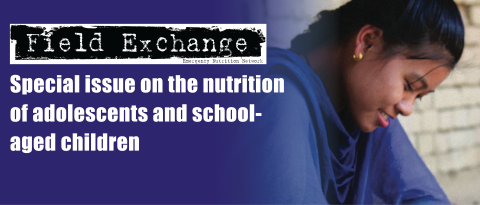Food systems for children and adolescents
This is a summary of the following special issue: Kupka, R., Morris, S., & Fox, E. (ed) (2020). Food systems for children and adolescents. Global Food Security. Available at: https://www.sciencedirect.com/journal/global-food-security/vol/27/suppl/C
Securing nutritious diets for children and adolescents could be achieved by reorientating food systems to deliver desirable, affordable, safe and sustainable diets. Currently, food systems often ignore the specific needs of children and adolescents, underestimating their potential as change agents and perpetuating the inability of food systems to address malnutrition in this group.
To respond to this issue, UNICEF and GAIN convened a Global Consultation on Food Systems for Children and Adolescents in 2018 that aimed to develop a common narrative and identify priority actions for food systems and diet quality among children and adolescents. A special issue on food systems for children and adolescents in Global Food Security reported the priorities identified before and after this consultation.
The first three articles in the special issue indicate that children and adolescents require special attention in food system reorientations for improved diets and that, despite existing data gaps, there is evidence that their dietary intakes are sub-optimal compared to recommendations. Two articles then provide a roadmap on how to reorient food systems to address these challenges. The first presents a conceptual framework, the ‘Innocenti Framework’, which includes a set of food system drivers (food supply chains, external food environments, personal food environments and behaviors of caregivers, children and adolescents), determinants, influencers and interactions that determine the diets of children and adolescents. The second describes how to translate the Innocenti Framework into practical action through a novel six-step assessment tool. The tool starts by measuring and understanding children's realities and then works back up into the system to identify how food environments and supply systems could make relevant foods more or less available, affordable, appealing and aspirational.
Three further papers present evidence on the key determinants of the food systems outlined in the Innocenti Framework. A review of the evidence on food supply chains and their link with food availability and children's and adolescents' diets is presented followed by a review of school- and community-based interventions that aim to shape food environments and their effects on diet outcomes. The next paper identifies the facilitators and barriers to the uptake of interventions that aim to improve the dietary behaviours of children and adolescents and highlights their implications for planning and monitoring future interventions. Despite research gaps, this evidence provides valuable insight into how food supply chains, food behaviours and food environments can support improved diets for children and adolescents.
Next, an evidence review examines child rights violations related to the growing problem of the digital marketing of unhealthy, ultra-processed foods to children and adolescents. Finally, key implications of the issue for public policies and programmes with specific country-level illustrations are outlined.
The evidence presented in this special issue constitutes an important step in reorienting current food systems to deliver ‘fit for purpose’ actions that work to improve the diet quality of children and adolescents.


